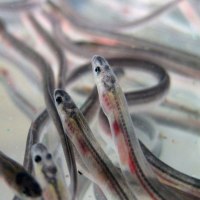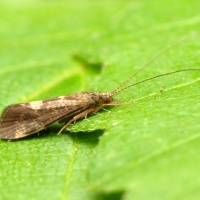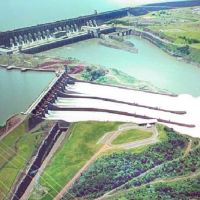Meet the BioFresh team: Núria Bonada

A river in the Rif region (Morocco). Image: Núria Bonada
We return from a short summer break with an interview with Dr. Núria Bonada, a specialist in aquatic insects and the ecology of Mediterranean rivers at the University of Barcelona.
 What is the focus of your research for BioFresh, and why?
What is the focus of your research for BioFresh, and why?
We are modeling future distributions of freshwater organisms in European catchments under global change scenarios. We have started by analyzing the future distribution of brown trout in the Ebro, the Elbe and the Danube. The obtained results are not very encouraging, as this species will disappear in 2080 in about 80% of the reaches where can be found today. Considering the natural, recreational and economic value of brown trout, measures to mitigate the effects of global change at catchment scale are urgently required.

Another river in the Rif region (Morocco). Image: Núria Bonada
How is your work relevant to policy makers, conservationists and/or the general public?
By presenting future distributions of freshwater organisms, our work will help policy makers to identify areas of high vulnerability to extinction loss and to address specific measures to mitigate the effects of global change. Given the natural, recreational and economic value of some of the freshwater species that we are considering, our work would not also be relevant for conservationists but also to fishermen or to the general public.
Why is the BioFresh project important?
BioFresh will provide access to data on freshwater organisms and therefore will open the door to address many future research questions. In a scientific world where so much public money has been invested in collecting data it is now time to make all this data available to all scientists, managers and to the general public. By doing so, BioFresh will help to improve the knowledge of freshwater diversity, its trends, and will provide clues for their conservation.

Talassemtane National Park (Morocco) Image: Núria Bonada
Tell us about a memorable experience in your scientific career
My great field experiences come from a project we have funded by the Spanish Ministry of Science and Education called RICHABUN. In this project were sampling along a wide latitudinal gradient including Morocco, Spain, France, Slovakia and Sweden. Besides the wonderful river landscapes and people we encountered, we were also delighted to have the opportunity to sample cheeses and wines. The perfect combination to get inspiration, having fun in the field and eating wonderful food!

Leafpack in the Cuisance River (France) Image: Núria Bonada
Another remarkable experience comes from a day that I was explaining how river ecosystems work in a primary school. I was explaining what is a shredder to several 5 years old children and then I asked them what could happen if these organisms disappeared from rivers. One of them answered that “we would need a plunger to unblock the river” because leaflitter would not be processed. He was very sweet and perfectly understood the role of shredders.

A very young freshwater ecologist!
What inspired you to become a scientist?
My father was a flyfisherman and was involved in a society of river conservation (AEMS-Ríos con Vida). I started to tie flies for him (smaller fingers!) when I was 6 years old and to cast when I was 7. Living in the Pyrenees, I was almost every day in the river trying to catch some brown trouts… usually without success, as I was more interested in what was around than on fishing. I was very often distracted by little aquatic insects flying around and missed most bites (i.e. the real catch and release system!). In AEMS-Rios con Vida I met wonderful people, river lovers who transmitted me their passion for discover and preserve these amazing ecosystems and their inhabitants. I met my PhD supervisors when I was 12 years old in a meeting of the society and they opened me the door to discover these ecosystems from the scientific point of view. My inspiration to become a scientist came from the river.

Sampling Trichoptera in the Pyrenees. Image: Albert Arean
What are your plans and ambitions for your future scientific work?
As I am mainly interested in large-scale patterns of aquatic organisms at different organizational scales, my future work will focus on trying to find common macroecological rules for community and population levels. One example of that would be to analyse latitudinal patterns of species diversity and to try to find some parallels with patterns of genetic diversity. Data from BioFresh can be therefore very useful to accomplish my future projects.














